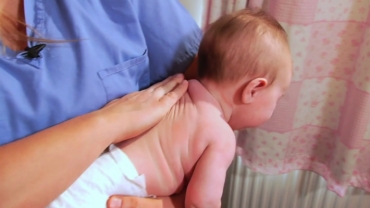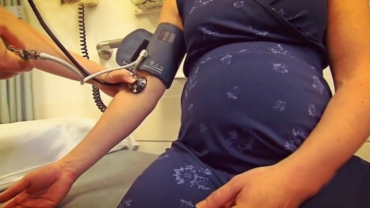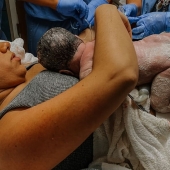After 9 months of pregnancy during which you experienced a lot of physical and emotional changes, you are finally blessed with a baby. After vaginal birth, it is important to focus on your healing and taking care of your body as well as your newborn.
1. Get Proper Rest and Sleep: Looking after a newborn is more than a full-time job, and new mothers often do not give much importance to rest and sleep. If needed, get extra support and sleep when your baby sleeps. Ask your partner to help with diaper changing duty at night so that you can get good sleep.
2. Use a Sitz Bath: Afterbirth pain – the cramping you feel as your uterus shrinks back to its regular size – is often unbearable. Try sitting in a sitz bath filled with warm water, three times a day and after bowel movements. Also, after urinating, pour a little warm water over the genital area to reduce the pain. You can also soak a maxipad in witch hazel and wear it to help ease pain.
3. Use Ice Packs: One practice is common during hospital births – use of ice packs. To reduce the swelling or pain around the opening of your vagina, ice packs are very helpful. Put water on a sanitary pad and freeze it to use as an ice pack. Repeat 2 or 3 times a day. You can also wrap a few ice cubes in a towel and place it against the aching area for 5 to 10 minutes. Do this a few times a day.
Note: Never leave an ice pack on for longer than 15 minutes. Also, have a protective layer of fabric between your sensitive skin and the ice pack.
4. Wear Extra Maxi Pads: No matter how you give birth, postpartum bleeding is normal. This type of bleeding is called lochia and can last from 2 to 6 weeks after birth. Using tampons is not recommended during this time, as they can introduce bacteria into your healing uterus. To prevent occasional overflow, you can even wear mesh undies. These are readily available in the hospital and are easily disposable.
5. Do Kegel Exercises: For quick recovery after vaginal birth, it’s important to strengthen your pelvic muscles. Practice Kegel exercises to strengthen your pelvic muscles after 1 to 2 weeks post-delivery. To do this exercise: Squeeze the muscles you use to stop the flow of urine. Hold for 10 seconds, then release for 10 seconds. Repeat 10 to 15 times. Do these Kegel sets 2 or 3 times a day.
6. Take Care of Any Stitches: Not all women need stitches after a vaginal birth, but some may need them. Most stitches take up to 3 weeks to heal and will dissolve on their own. Use a squirt bottle filled with warm water to clean your bottom after using the washroom. Drink enough water to keep your urine diluted. This will make it less painful while urinating. Try using an inflatable ring on the toilet to take the pressure off your bottom when you sit.
7. Handle Hemorrhoids: Post-delivery, whether it is a vaginal birth or C-section, some women experience hemorrhoids, which have symptoms like swollen veins in and around the anus and rectum. Eat plenty of fresh fruits and vegetables. Have whole grains and foods rich in fiber. Drink plenty of water and avoid coffee and carbonated beverages. You may need to ask your doctor for a stool softener until things heal up. You can also opt for a topical hemorrhoid cream.
8. Take Care of Breast Soreness: After delivery, your breasts start producing milk for feeding, irrespective of whether you plan to breastfeed. It is best to breastfeed, as it not only benefits the newborn baby but also helps your recovery. During the initial stage, your breasts may become heavy and sore, and you may find it difficult to feed your baby. Try to feed your baby or pump often to prevent engorgement and leaking. If your nipples are sore, make sure your baby is latching on properly. Wear a nursing bra with good support. Use breast pads to prevent milk leakage.
9. Check for Signs of Infection: Any kind of infection can delay the healing process and make things worse for a new mother. The first sign of an infection on the stitches is increased pain and a thick yellow or greenish discharge from around the stitches. The most obvious sign of an infection in the uterus is a foul or rotten odor in the vaginal blood.
10. Handle Your Emotions: Women feel emotional after the birth of a baby, and sometimes these emotions are not even positive! But if you are still feeling depressed or low even after 2 weeks of delivery, don’t keep it to yourself. Talk with your doctor. You may be suffering from postpartum depression, and treatment is available.
- 11551 views













